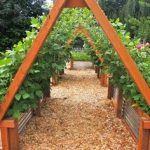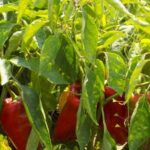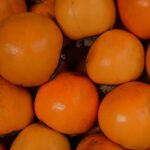Perennial vegetables are a great addition to any vegetable garden, offering a sustainable and long-lasting option for your gardening endeavors. Unlike annual vegetables that need to be replanted every year, perennial vegetables can provide a bountiful harvest for multiple seasons, saving you time and effort in the long run. In this article, we will explore the benefits of perennial vegetables and their role in sustainable gardening, as well as provide tips for incorporating them into your garden.
When it comes to creating a sustainable garden, perennial vegetables play an important role in reducing the need for constant replanting and maintenance. By adding these long-lasting plants to your vegetable garden, you can enjoy a continuous harvest without the hassle of yearly planting. Not only do they save time and effort, but they also contribute to soil health and nutrient cycling, making them an eco-friendly choice for any gardener.
In the following sections, we will delve into the top perennial vegetables for vegetable gardening, compare the advantages and disadvantages of growing perennial versus annual vegetables, and provide practical tips on how to integrate perennial vegetables into your existing garden. Whether you are new to gardening or looking to enhance your current practices, this comprehensive guide will help you reap the benefits of perennial vegetable gardening while minimizing the environmental impact.
Top Perennial Vegetables for Vegetable Gardening
When it comes to vegetable gardening, perennial vegetables offer a low-maintenance and sustainable option for gardeners. Unlike annual vegetables that need to be replanted each year, perennial vegetables can provide a continuous harvest without the need for replanting. This makes them an excellent choice for those looking to create a self-sustaining and resilient garden. Some popular perennial vegetables include asparagus, rhubarb, artichokes, and sorrel.
Asparagus is a popular perennial vegetable that can thrive for up to 20 years with proper care. It is rich in vitamins A, C, E, and K, as well as high levels of folate and fiber. Rhubarb is another great option for perennial vegetable gardening, known for its tart flavor and versatility in both sweet and savory dishes.
Artichokes are not only delicious but also visually striking plants that can add beauty to any garden bed. Lastly, sorrel is a lemony green that provides a zesty addition to salads or cooked dishes.
Incorporating these perennial vegetables into your garden not only adds variety to your harvest but also contributes to the sustainability of your gardening practices. Their ability to thrive year after year reduces the need for intensive tilling and planting, which minimizes soil erosion and helps maintain soil health over time.
| Perennial Vegetable | Key Nutrients |
|---|---|
| Asparagus | Vitamins A, C, E, K; Folate; Fiber |
| Rhubarb | Tart flavor; Versatility in dishes |
| Artichokes | Dietary Fiber; Vitamins C & K; Folate; Magnesium; Potassium. |
| Sorrel | Vitamin C sheath fibre |
Perennial Vegetables vs Annual Vegetables
When deciding what to grow in your vegetable garden, it’s important to consider the advantages and disadvantages of both perennial and annual vegetables. Perennial vegetables are a great option for vegetable gardening because they come back year after year, eliminating the need for re-planting. This makes them a low-maintenance choice for gardeners looking to create sustainable and long-term food sources.
One of the main advantages of perennial vegetables is their ability to improve soil health over time. Unlike annual vegetables, which require regular tilling and disturbance of the soil, perennial vegetables have deep root systems that help improve soil structure and prevent erosion. Additionally, these deep roots can also access nutrients deep within the soil, making them a sustainable choice for maintaining soil fertility in your garden.
On the other hand, annual vegetables have their own set of advantages. They tend to produce more immediate and abundant harvests, making them great for those looking to yield a large crop in a short amount of time. Additionally, annual vegetables may offer a wider variety of options when it comes to different types of crops that can be grown throughout the growing season.
How to Incorporate Perennial Vegetables in Your Garden
Perennial vegetables offer numerous benefits for vegetable gardening, including their ability to regrow year after year with minimal effort. They are a great addition to any vegetable garden, providing a sustainable source of fresh produce. Incorporating perennial vegetables into your existing garden may seem daunting at first, but with the right tips and strategies, it can be a rewarding and relatively simple process.
One strategy for incorporating perennial vegetables into your garden is to designate a specific area or bed for them. This will ensure that they have the space they need to thrive without intruding on the growth of other annual vegetables. Additionally, choosing the right location for your perennial vegetables is crucial. Make sure they are planted in an area with good drainage and access to sunlight, as these conditions are essential for their growth.
Another tip for integrating perennial vegetables into your existing garden is to consider their growth habits and spacing requirements. Some perennial vegetables, such as asparagus and rhubarb, require plenty of space to spread out, while others can be grown in smaller areas. Researching the specific needs of each perennial vegetable you want to grow will help you make informed decisions about where and how to plant them in your garden.
When considering how to incorporate perennial vegetables into your garden, it’s important to plan for their long-term presence. Unlike annual vegetables that are replanted every year, perennial vegetables will continue to grow and expand over time. Therefore, leaving some room for them to spread out and establishing a clear plan for maintenance and care is essential.
| Perennial Vegetables Tips | Strategies |
|---|---|
| Designate a specific area or bed | To ensure they have ample space to grow without impacting other plants |
| Choose the right location | Good drainage and access to sunlight are crucial |
| Consider growth habits and spacing requirements | Research each perennial vegetable’s needs before planting |
| Plan for long-term presence | Leave room for expansion and establish a maintenance plan |
Maintenance and Care for Perennial Vegetables
When it comes to caring for perennial vegetables in your garden, there are a few key factors to keep in mind. From providing the right amount of water and nutrients to managing pests and diseases, proper maintenance is essential for ensuring a bountiful and sustainable harvest year after year.
Watering and Feeding
One of the advantages of perennial vegetables is that they generally require less water and fertilizer than annual crops. However, it’s still important to provide them with the necessary nutrients to support their growth and production.
When it comes to watering, be sure to monitor the soil moisture levels and adjust your watering schedule as needed. For feeding, consider using organic fertilizers or compost to provide a steady supply of nutrients to your perennial vegetables without overloading them with synthetic chemicals.
Pest and Disease Management
Just like annual vegetables, perennial vegetables can fall victim to pests and diseases. To minimize the risk of infestations or infections, practice good garden hygiene by keeping the area clean and free of debris.
Additionally, consider using natural pest control methods such as companion planting or introducing beneficial insects to help manage pest populations. If you do encounter a pest or disease issue, research organic solutions or consult with a local gardening expert for advice on how to address the problem without resorting to harsh chemicals.
Pruning and Maintenance
Some perennial vegetables may require occasional pruning or maintenance to keep them healthy and productive. For example, vining plants like grapes or hops may benefit from regular pruning to encourage air circulation and reduce disease pressure. Similarly, some perennial herbs may need to be divided or transplanted periodically to prevent overcrowding. Be sure to research the specific care requirements for each type of perennial vegetable in your garden and set aside time for regular maintenance tasks throughout the growing season.
By taking the time to properly care for your perennial vegetables, you can enjoy a consistent harvest for years to come while minimizing the need for excessive inputs like water and fertilizer. With thoughtful attention and consistent maintenance, these resilient plants can thrive in your vegetable garden while contributing to a more sustainable gardening practice overall.
Perennial Vegetables and Soil Health
Perennial vegetables play a crucial role in maintaining soil health and promoting nutrient cycling in the garden. Unlike annual vegetables, which require regular tilling and replanting, perennial vegetables have deep root systems that help to improve soil structure and fertility over time. By exploring the impact of perennial vegetables on soil health, gardeners can gain a better understanding of the long-term benefits of incorporating these plants into their vegetable gardens.
One way in which perennial vegetables contribute to soil health is through their extensive root systems, which help to break up compacted soil and improve water infiltration. Additionally, the deep roots of perennial vegetables can reach nutrients in the soil that are inaccessible to shallow-rooted annual plants, making these nutrients available for other crops in a process known as nutrient cycling.
This not only benefits the perennials themselves but also supports the overall health and productivity of the garden ecosystem.
To further illustrate the impact of perennial vegetables on soil health, consider the following list of ways in which these plants contribute to sustainable gardening practices:
- Improving soil structure and fertility
- Preventing erosion and runoff
- Supporting beneficial microorganisms and earthworms
- Reducing the need for chemical fertilizers and pesticides
Incorporating perennial vegetables into your vegetable garden can significantly enhance soil health and promote a more sustainable gardening approach. By understanding the impact of these plants on nutrient cycling and overall soil quality, gardeners can make informed decisions about their crop selection and management practices for long-term environmental and economic benefits.
Harvesting and Preserving Perennial Vegetables
Timing Is Everything
When it comes to harvesting perennial vegetables, timing is crucial. Different perennial vegetables have different optimal harvest times, so it’s important to familiarize yourself with the specific needs of each plant in your garden. While some vegetables can be harvested throughout the growing season, others may need to reach a certain stage of maturity before they are ready for harvest.
Harvesting Techniques
The harvesting techniques for perennial vegetables vary depending on the type of vegetable. Some can be simply plucked from the plant by hand, while others may require cutting tools such as shears or knives. It’s important to handle the plants delicately during harvesting to avoid damaging them, which could impact their future growth and production.
Tips for Preserving Your Harvest for Future Use
Canning and Freezing
One of the best ways to preserve your perennial vegetable harvest is by canning or freezing them. This allows you to enjoy your homegrown produce even during the off-season. Vegetables like asparagus, rhubarb, and artichokes can be effectively preserved through these methods, ensuring that you have a supply of fresh produce year-round.
Drying and Pickling
Drying and pickling are also popular preservation methods for perennial vegetables. Herbs like oregano and thyme can be air-dried and stored in jars for later use, while cucumbers and peppers can be transformed into delicious pickles that add flavor to your meals. These preservation techniques not only extend the shelf life of your harvest but also add diversity to your culinary creations.
By learning how to properly preserve your perennial vegetable harvest, you can make the most out of your garden’s bounty and enjoy delicious and nutritious produce all year long. Whether it’s through canning, freezing, drying or pickling, there are plenty of options available for keeping your harvest fresh and flavorful for months to come.
Long-Term Benefits of Perennial Vegetable Gardening
In conclusion, perennial vegetables offer numerous long-term benefits for both the environment and your wallet. By incorporating these hardy, low-maintenance plants into your vegetable garden, you can reduce the need for annually replanting your garden beds, saving time and money on seeds or seedlings. This in turn can lead to a more sustainable gardening practice, with less waste and a smaller environmental footprint.
Additionally, perennial vegetables contribute to soil health and nutrient cycling in the garden. Their deep root systems help improve soil structure and increase its organic matter content, making the soil more fertile and productive over time. This can result in healthier, more abundant harvests of not only perennial vegetables but also annual crops that are grown alongside them.
Finally, by establishing a perennial vegetable garden, you are investing in long-term food security for yourself and your family. Once established, many perennial vegetables will continue to produce a reliable harvest year after year with minimal effort on your part.
This means a more consistent supply of fresh, homegrown produce without the need for as much ongoing labor or resources. Ultimately, incorporating perennial vegetables into your gardening practices can lead to a more sustainable, cost-effective, and bountiful vegetable garden for years to come.
Frequently Asked Questions
What Are the Best Perennial Flowers for Vegetable Gardens?
Some of the best perennial flowers for vegetable gardens include lavender, chamomile, yarrow, and Echinacea. These flowers not only add beauty to the garden but also attract pollinators and beneficial insects.
Are There Perennial Vegetable Plants?
Yes, there are perennial vegetable plants such as asparagus, rhubarb, artichokes, and some varieties of kale and Swiss chard. These plants come back year after year, making them a great investment for a vegetable garden.
What Vegetable Plants Come Back Year After Year?
Vegetable plants that come back year after year include asparagus, rhubarb, horseradish, Jerusalem artichokes, and some varieties of kale and Swiss chard. These perennial vegetables require less maintenance and provide a continuous harvest for years to come.

If you’re looking to get into vegetable gardening, or are just looking for some tips on how to make your current garden better, then you’ve come to the right place! My name is Ethel and I have been gardening for years. In this blog, I’m going to share with you some of my best tips on how to create a successful vegetable garden.





